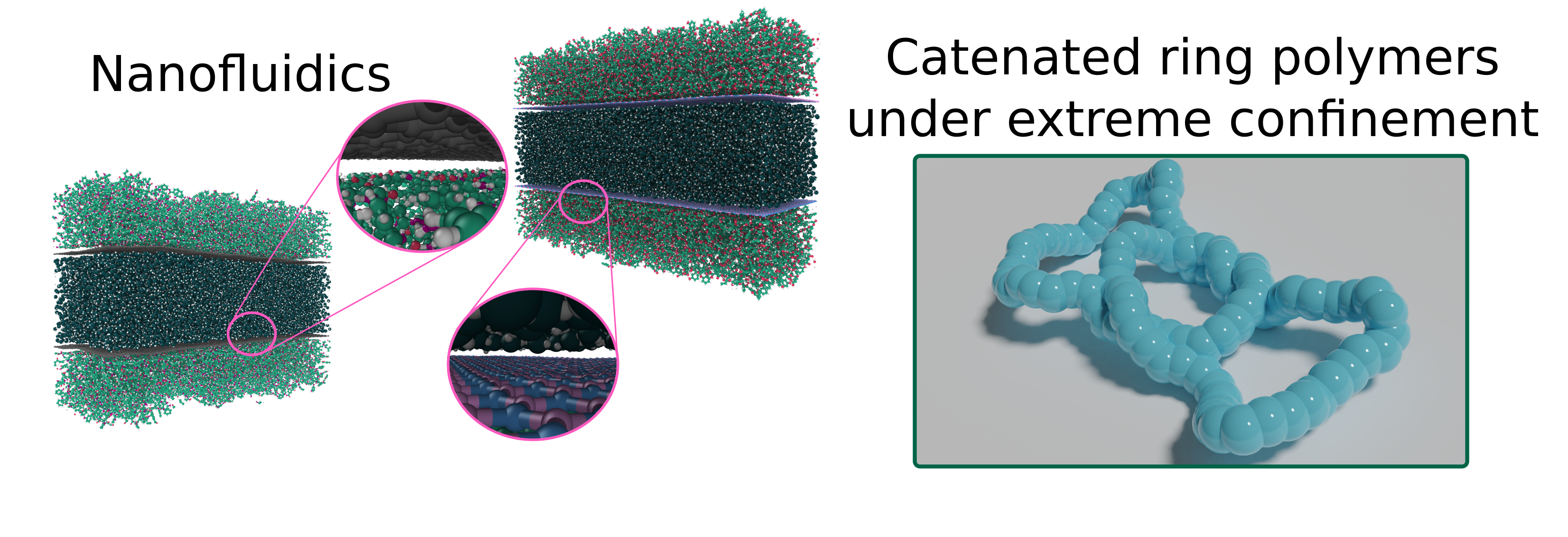Research Areas

Soft matter refers to materials whose behavior is strongly influenced by thermal fluctuations, where the thermal energy (kBT) is comparable to the strength of the molecular interactions. This includes a wide range of substances such as colloids, polymers, foams, gels, granular materials, liquid crystals, surfactants, and a number of biomaterials. Research in this field focuses on understanding how molecular architecture, thermodynamic conditions, and external forces govern the structural and dynamic properties of these materials. For example, in liquid crystal polymers, the interplay between the polymer's architecture and liquid crystal moieties influences mesophase transitions and thermal behavior. By using computational methods such as coarse-grained molecular dynamics, we explore how these materials respond to thermal fluctuations, contributing to the design of advanced materials with tunable properties.

Rheology is the study of how materials deform and flow under external forces, linking stress and deformation over time. In soft matter systems like polymers and complex fluids, it reveals non-Newtonian behaviors. Our research explores polymer rheology through theoretical and computational approaches, focusing on both linear and nonlinear regimes. We bridge multiple levels of description, from atomistic force fields in molecular dynamics (MD) simulations to coarse-grained models like the discrete slip-link model (DSM). This multiscale framework allows us to predict rheological behavior across vastly different time and length scales. By integrating physics-based models with high-fidelity simulations, our work advances predictive capabilities in polymer rheology, offering fundamental understanding and practical applications in materials design and processing.

The high surface-to-volume ratio is why fluids in nanoconfinement, such as nanochannels or nanopores, exhibit exotic behaviors that deviate from continuum theories. At the nanoscale, classic Navier-Stokes equations shift from being predictive to merely descriptive. In this context, molecular dynamics (MD) simulations are key to studying fluid and biomolecular dynamics, providing insights beyond macroscopic models. Our research focuses on nanofluidic systems, particularly the role of 2D material coatings like graphene and hBN in nanochannels, which alter transport properties such as slip lengths and Kapitza resistance. We also explore the behavior of complex biological systems confined in nanoscale environments to understand the dynamics at this scale.


 https://orcid.org/0000-0002-7429-9151
https://orcid.org/0000-0002-7429-9151